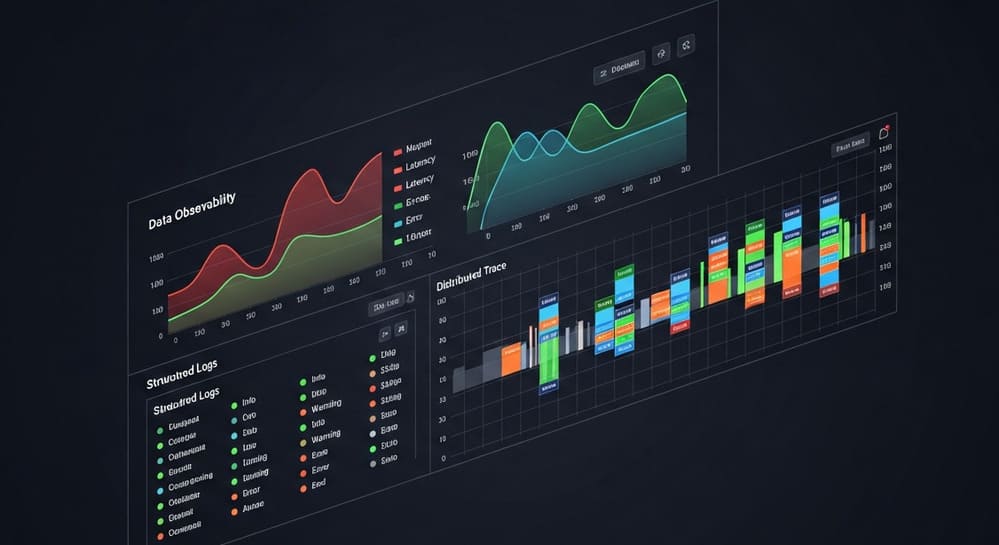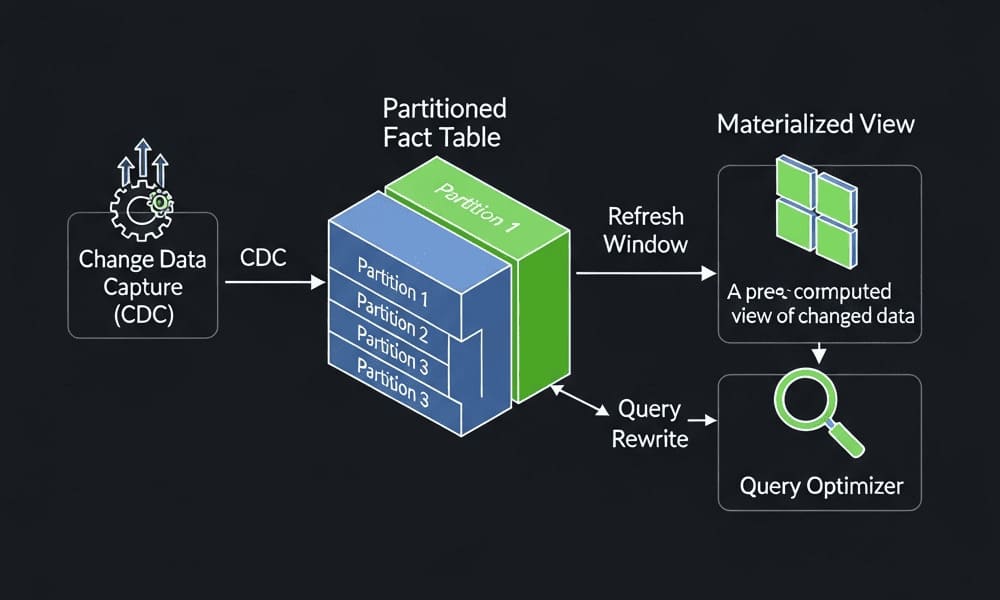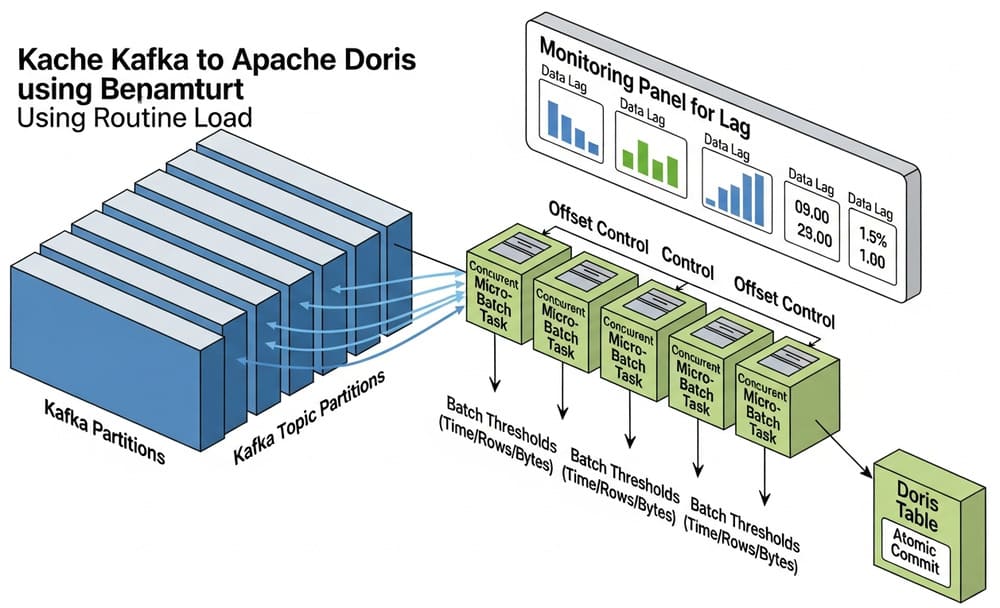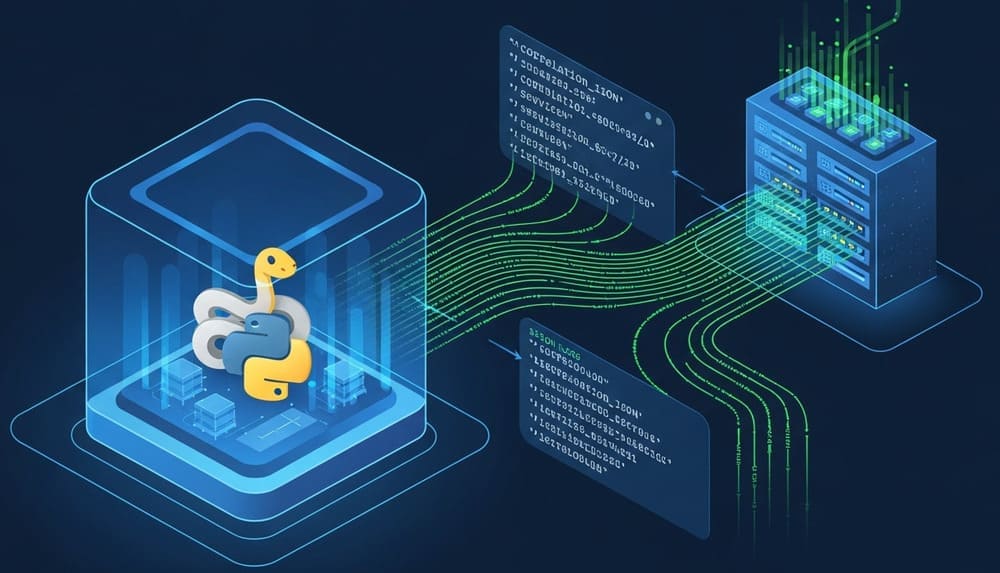Apache Storm for Real-Time Data: Architecture, Patterns, and Production Tactics
Introduction — why this matters
You’ve got events landing every millisecond—clicks, sensor readings, orders—and your batch pipeline is hours late to the party. You need per-event decisions now: detect fraud, update leaderboards, enrich logs, drive alerts. Apache Storm is a battle-tested, low-latency stream processor built precisely for this: sub-second processing with at-least-once delivery, backpressure, and fault tolerance.
This guide gives you the architecture, the core APIs, a runnable topology example, and the pragmatic best practices I actually use when putting Storm in production.
What is Apache Storm?
Apache Storm is a distributed, real-time computation system for processing unbounded streams. You build topologies—directed graphs of computation—that continuously consume events from sources (Kafka, Kinesis, sockets) and push results to sinks (Cassandra, Redis, Elasticsearch, S3, …).
Key traits
- Low latency: millisecond-level end-to-end under load when tuned.
- Scales horizontally: add workers/executors to parallelize.
- Fault tolerance: replay on failure, ack/fail tracking.
- At-least-once semantics by default; exactly-once-ish with Trident (micro-batch + transactional sinks).
Storm Architecture (plain-English)
- Nimbus: the “master” that deploys and manages topologies across the cluster.
- Supervisors: run on worker nodes, launching Workers (JVMs) that execute your code.
- Workers → Executors → Tasks: worker JVMs host executors (threads) that run tasks (instances) of your Spouts and Bolts.
- ZooKeeper: coordination and state (assignments, heartbeats) in classic setups.
- Topologies: DAGs wired from Spouts (sources) to Bolts (processing).
Data flows like this: Spout emits tuples → Bolt A parses/enriches → Bolt B aggregates/windows → Bolt C writes to sink. Storm tracks each tuple’s lineage so failures trigger replay.
When to choose Storm (and when not to)
| Scenario | Storm is a Good Fit | Consider Alternatives |
|---|---|---|
| Ultra-low latency per event (<100ms) | ✅ | |
| Complex per-event branching, custom state mgmt | ✅ | |
| At-least-once OK (idempotent sinks) | ✅ | |
| You need SQL over streams | Flink SQL, Spark Structured Streaming | |
| Exactly-once with complex joins | Flink (native), Kafka Streams (transactional) | |
| Mostly micro-batch analytics | Spark Structured Streaming |
Core Concepts (with mental models)
- Spout: “Inlet pipe.” Reads from Kafka and turns bytes → tuples.
- Bolt: “Workbench.” Pure function-ish step: parse, filter, enrich, aggregate, write.
- Stream Grouping: “Wiring diagram.” How tuples are partitioned among bolt tasks:
shuffleGroupingfor even load.fieldsGrouping("user_id")to keep keys together for state/aggregation.allGroupingto broadcast control messages.
- Reliability: Every emitted tuple forms a tree. If any child fails to ack within
messageTimeoutSecs, the spout replays.
A realistic topology (Kafka → Enrich → Aggregate → Cassandra)
Topology sketch
- KafkaSpout: consumes
orderstopic. - EnrichBolt: joins with product cache (Redis) to add category/price.
- AggregateBolt: rolling sum per
merchant_idusing keyed fields grouping + tumbling window. - SinkBolt: upserts aggregates to Cassandra with idempotent keys.
Java (Storm 2.x) — trimmed, production-flavored
TopologyBuilder b = new TopologyBuilder();
// 1) Spout: Kafka -> tuples
KafkaSpoutConfig<String, String> kcfg = KafkaSpoutConfig.builder("kafka:9092", "orders")
.setProp(ConsumerConfig.GROUP_ID_CONFIG, "storm-orders")
.setFirstPollOffsetStrategy(KafkaSpoutConfig.FirstPollOffsetStrategy.LATEST)
.setProp(ConsumerConfig.AUTO_OFFSET_RESET_CONFIG, "latest")
.build();
b.setSpout("orders-spout", new KafkaSpout<>(kcfg), 4);
// 2) Enrich: add product/category via Redis cache
b.setBolt("enrich-bolt", new EnrichBolt(/* redis cfg */), 8)
.shuffleGrouping("orders-spout");
// 3) Aggregate: tumbling window per merchant
b.setBolt("agg-bolt",
new SlidingWindowBolt()
.withTumblingWindow(BaseWindowedBolt.Duration.seconds(30))
.withKeyField("merchant_id"),
8)
.fieldsGrouping("enrich-bolt", new Fields("merchant_id"));
// 4) Sink: idempotent upsert to Cassandra
b.setBolt("sink-bolt", new CassandraSinkBolt(/* session, table */), 4)
.shuffleGrouping("agg-bolt");
// Submit
Config cfg = new Config();
cfg.setNumWorkers(4);
cfg.setMessageTimeoutSecs(60);
StormSubmitter.submitTopology("orders-agg-topology", cfg, b.createTopology());
Notes
- Use fieldsGrouping(“merchant_id”) to co-locate state.
- Windowed bolts aggregate per key; manage memory with eviction.
- Make the sink idempotent: composite key
(merchant_id, window_start).
Windowing & State (what you’ll actually do)
- Tumbling window (e.g., 30s) for rollups—no overlap.
- Sliding window (e.g., 5m length, 30s slide) for smoother metrics.
- Keep state in memory + periodic checkpoints, or offload to Redis/RocksDB (via custom bolts) when cardinality grows.
- For exactly-once outputs, consider Trident with transactional sinks, but expect higher latency.
Backpressure, reliability, and performance tuning
- Backpressure: Storm signals spouts to slow down when bolts lag. Make sure downstream bolts can scale horizontally.
- Parallelism:
setSpout(..., parallelismHint)setBolt(..., parallelismHint)setNumWorkers(N)to scale JVMs across nodes.
- Acking:
- Always
collector.ack(input)after successful processing. - On exceptions,
collector.fail(input)to trigger replay.
- Always
- Serialization: Register custom serializers (Kryo) for hot types.
- GC: Favor reusable buffers; avoid per-tuple object churn in hot bolts.
- Batching to sinks: Buffer N records or T milliseconds—careful to ack only after durable write.
Production checklist (hard-won lessons)
Design
- Make every bolt idempotent. Upserts, natural keys with window boundaries, or dedupe tables.
- Use fieldsGrouping for any stateful aggregation; never rely on shuffle for keyed state.
- Schema your tuples: avoid loose
Map<String,Object>; define fields upfront.
Ops
- Set
messageTimeoutSecs> (max processing time + retry cushion). - Monitor complete-latency, capacity (busy time), and emitted/acked per component.
- Roll deployments using versioned topologies; keep old running until the new one is healthy.
Data
- Validate with sentinel messages and canary topics.
- For reprocessing, maintain a Kafka retention window and replay by resetting offsets (Storm will re-emit).
Security
- Enable TLS to Kafka and Cassandra; isolate topologies via network policies.
- Externalize secrets; don’t hardcode.
Common pitfalls (and how to dodge them)
- Hot keys (e.g., one merchant dominates traffic): use key bucketing
(merchant_id, bucket)and merge downstream. - Unbounded state: define window eviction + max cardinality guards; spill to an external store.
- Ack storms: ack only after side effects complete; batch writes to sinks.
- Under-provisioned bolts: if a bolt’s capacity > 1.0, add executors or optimize code.
- “Exactly-once” wishful thinking: Storm core is at-least-once. If you need stronger guarantees, use Trident with transactional sinks or evaluate Flink.
Real example: real-time anomaly alerts
- Input:
paymentsKafka topic. - Flow: Spout → Parse → Enrich (geo/IP risk) → Rolling stats per card → Z-score threshold → Alert sink (Elasticsearch + Slack).
- Key tricks:
- fieldsGrouping on
card_id. - Tumbling 60s windows, outlier detection per key.
- Idempotent alert IDs:
(card_id, window_start, anomaly_type).
- fieldsGrouping on
Comparison quick-look
| Feature | Storm | Flink | Spark Structured Streaming | Kafka Streams |
|---|---|---|---|---|
| Latency | Very low | Very low | Low–medium | Very low |
| Semantics | At-least-once (Trident for EO) | Exactly-once | Effectively-once (sinks dependent) | Exactly-once (txn) |
| API style | Spout/Bolt (DAG), Trident | Rich streaming + SQL | DataFrame/SQL | Embedded library |
| Deployment | Cluster (Nimbus/Supervisors) | Cluster | Cluster | App-embedded |
Internal link ideas (for your blog/wiki)
- Designing Idempotent Sinks for Streaming Pipelines
- Kafka Partitioning & Keys: Getting Fields Grouping Right
- Exactly-Once Semantics: What It Really Means in Practice
- Monitoring Storm: Capacity, Latency, and Backpressure 101
- Choosing Between Storm, Flink, and Kafka Streams
Conclusion & Takeaways
Apache Storm remains a rock-solid choice when you need predictable, ultra-low latency per event, custom logic in code, and straightforward at-least-once guarantees. If you make your sinks idempotent, partition by the right keys, and watch capacity/latency, you’ll get a resilient real-time backbone that’s simple to reason about and scales with traffic.
Remember
- Model your topology as small, testable bolts.
- Partition by fields for stateful steps.
- Make outputs idempotent and batch your sinks.
- Monitor, tune, and plan for replays.
Image prompt (for AI tools)
“A clean, modern architecture diagram of an Apache Storm cluster: Nimbus, Supervisors, Workers/Executors, and a topology DAG from Kafka Spout to multiple Bolts, showing fields grouping and tumbling windows — minimalistic, high contrast, 3D isometric style.”
Tags
#ApacheStorm #StreamProcessing #DataEngineering #RealTimeAnalytics #Kafka #Cassandra #Scalability #LowLatency #DistributedSystems #Architecture




